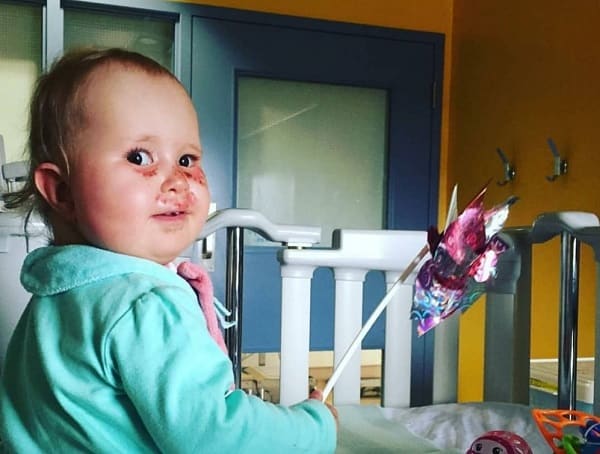

Imagine being allergic to the sun. With the bright yellow ball beating down on most areas of Canada right now it’s hard to imagine having to stay inside. But one two-year old Langley, BC toddler must do exactly that or risk serious health consequences.
Charlie Lock doesn’t have an allergy, exactly. What she does have is a condition called Erythropoietic protoporphyria, or EPP. If she were to venture outside she would almost immediately suffer from second degree burns. It’s a disease that affects only about 200 people, worldwide.
Charlie’s mom, Rebekah Lock, was understandably miffed at the diagnosis, which essentially makes her daughter a prisoner of their home during daylight hours.
“We were like, that can’t be. Who is allergic to the sun? That’s just bizarre,” she told City News.
There is currently no established cure for EPP, but a bone marrow transplant could offer hope.
“When we were first told about a bone marrow transplant we were excited and terrified,” Lock said. “The fact that she could be cured and be able to do normal things was really, really exciting. But we are at this point where if we don’t find someone really soon we will just have to go through with it because it is just luck of the draw.”
A recent study publised in the journal Proceedings of the National Academy of Sciences hospital says porphyrias may be the origin of vampire folklore because those suffering from the condition need to stay inside and sometimes require blood transfusions.
“Although vampires aren’t real, there is a real need for innovative therapies to improve the lives of people with porphyrias,” Barry Paw MD, PhD, of the Dana-Farber/Boston Children’s Cancer and Blood Disorders Center told Science Daily.
Paw describes just how difficult the condition is.
“People with EPP are chronically anemic, which makes them feel very tired and look very pale with increased photosensitivity because they can’t come out in the daylight,” says Barry Paw MD, PhD, of the Dana-Farber/Boston Children’s Cancer and Blood Disorders Center. “Even on a cloudy day, there’s enough ultraviolet light to cause blistering and disfigurement of the exposed body parts, ears and nose.”
But there may be some hope on the horizon for Lock. Recently, the FDA said it would review an Australian drug developed to treat EPP that is already availabel in Europe. The treatment, called SCENESSE® or afamelanotide 16mg, was developed over the past 14 years by the Australian pharmaceutical company CLINUVEL.
“Professor Elisabeth Minder, head of Biochemical Laboratory Analytics at Triemli Hospital in Zurich, who was involved in the first clinical trials of the product in EPP and continues to treat EPP patients, says it has potential to change lives.
“My patients tell me, since 2006, that this treatment facilitates a life which was unthinkable for them and their immediate families,” she said. “Therefore, I am delighted that this treatment finally nears the point of becoming available to all American EPP patients.”
A family friend has started a GoFundMe page for Charlie, to help with hospital costs.
Below: Genetic condition makes baby girl allergic to sun
Leave a Reply
You must be logged in to post a comment.




 Share
Share Tweet
Tweet Share
Share




Comment